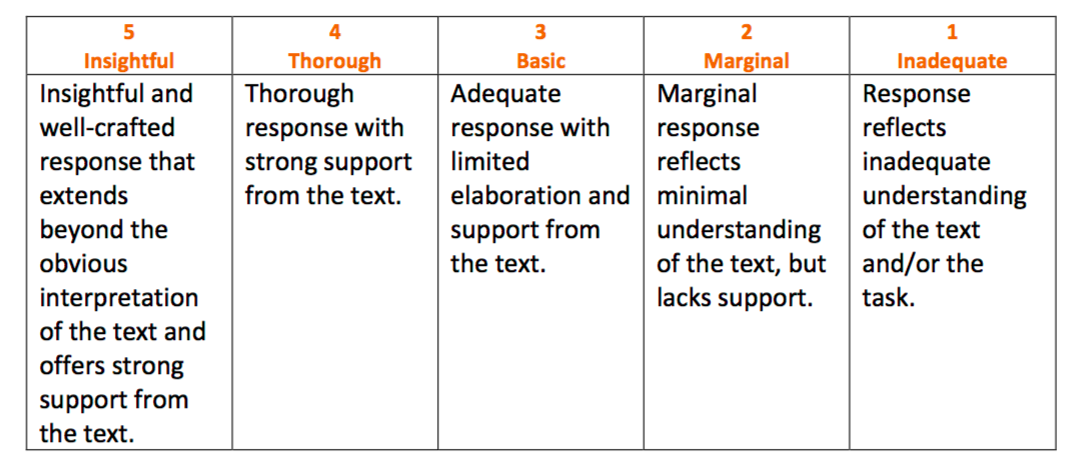A rubric can be both an instrument for assessment/evaluation as well as a tool for teaching what effective responses look like.
What do we value in responses to reading? First and foremost, is there evidence that the reader actually read and understood the text? Is the response clearly articulated, with explanation and elaboration? And, are there direct references to the text to support the response? (See The Three E’s of Reader Response.)
A simple generic rubric like the one below can be a quick and easy tool for assigning a numerical score or letter grade. The advantage of using a rubric for assessment is that the students can see the criteria for their assigned score, as well as what they need to do to raise the score to the next level.
Some of the ways that this rubric may be used include:
- Showing students how to write effective responses using a shared or modelled writing approach.
- Gathering sample responses and having students discuss and score them.
- Scoring responses, then allowing students to revisit and revise their responses to raise the scores.
- Recording a quick 1-5 score for each piece to use for assessment and accountability
- Assigning numeric scores or letter grades to each level to use for formal evaluation

For example…
Prompt: In the traditional fairy tale “Jack and the Beanstalk,” who is the hero and who is the villain?
5
I think Jack was the real villain. The giant was just minding his own buisness when Jack climbed up the beanstock and stole his gold. There’s no proof the giant ever ate a boy and he certainly never ate Jack. The giant was only protecting his own property going after Jack. Who can blame him?
This “5” response reflects thinking “outside the box” about the story, yet it is carefully supported with specific evidence from the text.
4
The giant is the villain because he is bloodthirsty and desperate to kill Jack. He is furious when Jack steals his gold and his harp and his magic hen. He even says, “Be he alive or be he dead, I’ll have his bones to grind my bread!“
This response merits a solid “4” because it is well-articulated and supported with direct evidence from the text. It doesn’t get a “5” because it reflects a pretty conventional, as opposed to insightful, perspective on the story.
3
Giants are always the villains in fairy tales. This giant is furious when Jack steals his gold and other things. He’s determined to kill Jack and chases him down the beanstalk, but kills himself instead.
This “3” response demonstrates that the reader read and understood the story. It is a correct, but basic, interpretation with some general, rather than specific, support.
2
Jack is the hero because he’s the good guy. The giant is the villain because he’s mean and out to get Jack.
As a 2, this is a minimal response that reflects some understanding of the story, but without elaboration or textual support.
1
A hero does good deeds and saves the day.
This response merits a “1” for at least writing something related to the prompt; however, there is no evidence that the reader has even read the story.

